The most iconic sight in Australia, Uluru or Ayers Rock sits in the heart of the red centre. “I wonder if you can climb it?” I said jokingly to Brian as we drove through the dusty Outback roads from Alice Springs. I quickly flicked to the section on Uluru-Kata Tjuta National Park in the guidebook and saw that you could, in fact, climb Uluru if the route was open. We didn’t expect to be able to climb Uluru as I’d seen plenty of pictures of the huge monolith itself, but never any from the top. “Wow, that would be pretty cool!”, we thought.
Anyone who follows Wandering On or knows us would be aware that we love to get high (in the altitude sense of course!). Our love of all things hike-able came after we trekked to Everest Base Camp independently in 2012. Since then we’ve climbed Japan’s Mount Fuji, summited North Africa’s highest peak in Morocco, and hiked our own country, Ireland’s highest mountain a few times, as well as a host of other hiking adventures in Indonesia, Korea and Vietnam and other countries around the world.
Why We Chose Not To Climb Uluru
Simple Requests Not To Climb Uluru From Local Anangu People
Seeing things from a high vantage point is always amazing and we thought the opportunity to see the vast expanse of Australia’s red centre from the top of Ayers Rock would be epic! It was not going to be an easy climb as it was up a sheer rock face and often the climb is closed due to strong winds but these were not the reasons that swayed our decision not to climb Uluru.
“That’s a really important, sacred thing that you are climbing, you shouldn’t climb, it’s not the proper thing.”
“We don’t climb”
The simple phrases from the local Anangu people imploring tourists not to climb.
This is a sign right next to the beginning of the trail up the rock.
To Climb Uluru Is Culturally Inappropriate And Insensitive
High points are sacred in many cultures, Mount Fuji is sacred to the Japanese, Everest or “Chomolungma” Tibetan for “Mother of the World” is sacred to the Sherpa people, Mount Cook or “Aoraki” meaning “cloud piercer” is sacred to New Zealand’s Maori people. When climbing these peaks people have upheld the cultural traditions and beliefs of the local people.
Uluru is a sacred place to all aboriginals as it forms a central role in their creation story. The climbing route follows a sacred ceremonial path traditionally used by the Mala men, and it is against the wishes of the local indigenous people for tourists to undertake the climb. Having tourists walk all over it must not be a very pleasant experience for them.
Would you visit a Buddhist temple and head in with your shoes on? Would you visit a mosque and not cover your head despite being asked to do so? Or like one ranger suggested “it’s like climbing on top of a church”, nobody would stand for it, so why is it ok to disrespect local customs and beliefs here?
The Anangu people also feel responsible for anything that happens to people on their land so people having accidents while climbing upsets them further. Parts of the rock are not permitted to be photographed such is their spiritual importance to the local’s beliefs.
What Can You Do Instead Of Climbing Uluru?
The vibes around the whole national park are amazing! Uluru is also believed to be one of the major ley lines of the world and you can really feel a special energy here. There are so many other things to keep you entertained in the national park for three days without climbing Uluru.
- Visit Kata Tjuta and do the Valley of the Winds walk
- See both Kata Tjuta and Uluru by both sunrise and sunset
- Walk around the base of Uluru
- Visit the cultural centre
Why Was It Still Possible To Climb Uluru?
Part of the deal in the local indigenous people re-attaining land rights over the national park was that the climb would be kept open. The government fears that “the climb” is one of the only reasons tourists come to Uluru and that if they closed it completely no one would visit. Well, we didn’t even know climbing Uluru was an option until we were on the way to visit this amazing place.
There is a counter on the way up the rock and until the number of tourists who visit the park compared to the number who choose to climb falls below 20% the climb will remain open.
In fact, the climb was actually open on our last day in the national park as the weather conditions were perfect. Hordes of people (mostly Australians) were actually venturing to the top much to our dismay. It seems that some people still want that perfect Instagram photo of the back of their head at the top, or the typical arms outstretched picture or even the “I climbed Ayers Rock” t-shirt, even if it goes against the wishes and beliefs of local indigenous people.
When we were chatting to a park ranger in the cultural centre and asking why the climb was still open, he said to us “If you do choose to climb and it ever comes up at a party, will you even tell anyone you did it or show anyone your picture? Probably not because everyone will think you’re a d**k!” Typical Aussie bluntness, but he’s right!
We chose to respect the wishes of the local people and hoped that we would help that number fall below the threshold.
“Climb the mountain, not so the world can see you, but so you can see the world.”
By choosing not to climb Uluru you can make a difference to the beliefs and wishes of the local people.
Update – Uluru Climbing Route Permanently Closed From October 26th 2019
It was released on the 1st November 2017 that the climb was going to be closed permanently on the 26th October 2019, a date which is of huge significance to the Anangu people as it will mark 34 years since Uluru was handed back to its traditional owners.
From now on, visitors are advised that climbing Uluru is a breach of the Environmental Protection and Biodiversity (EPBC) Act, and penalties will be issued to visitors attempting to do so making climbing Uluru punishable by a $6,300 fine.
Your Choices And Actions When You Travel Can Make A Difference!
The number of visitors choosing to climb Uluru has dropped to 16% in recent years, making the closure possible. It feels so good to have made a difference in our choice not to climb Uluru!
Would you climb Uluru if it was still open? Have you before it was closed? Please let us know in the comments below.
Pin It!
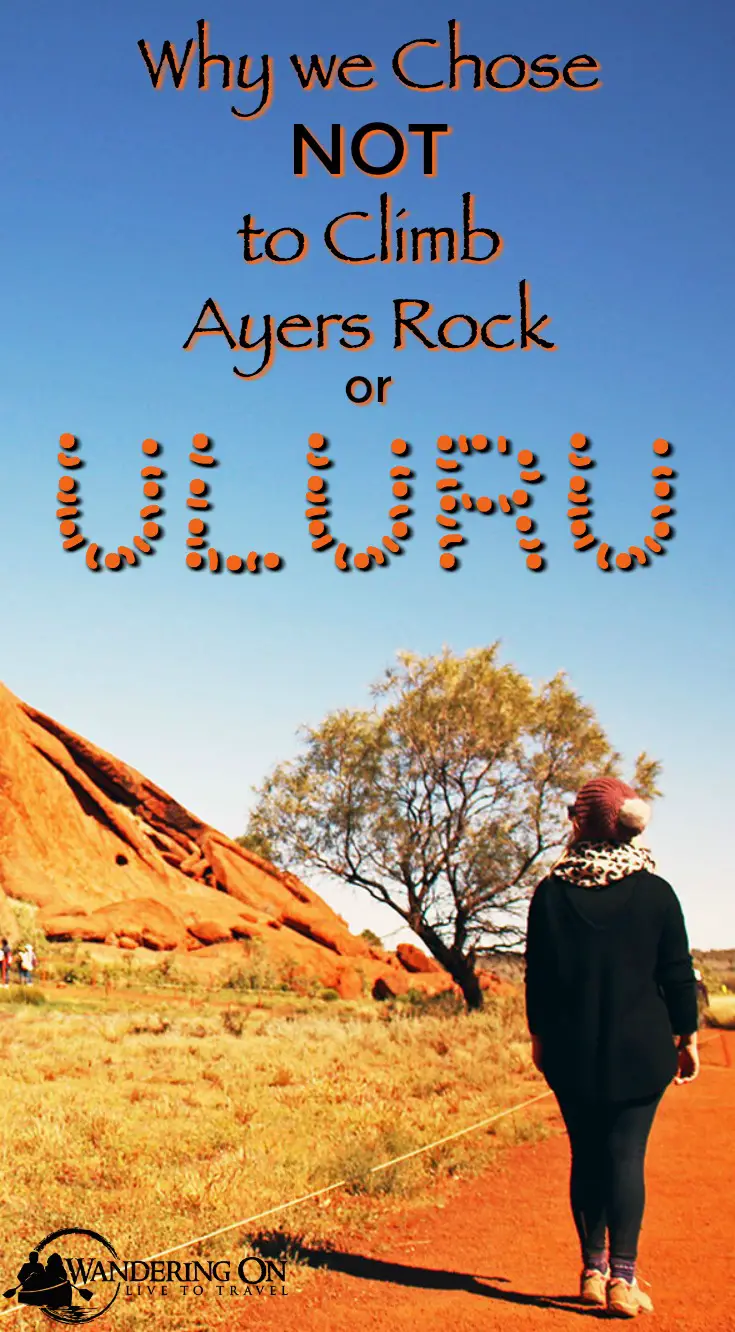
Noelle is a pescatarian foodie, travel junkie and a massive dog person. She’s a self-diagnosed chocoholic and loves tea, coffee and red wine. She also loves to do yoga and therefore is the sensible, grounded one in the relationship! Noelle loves to really get to grips with the culture of a country and the mindset of the people. She also enjoys picking up a few words in the local language wherever she is and, of course, sampling the local food!
Sign up for our free travel photography Ebook "Faces of Nepal" and you'll also receive our monthly newsletter.

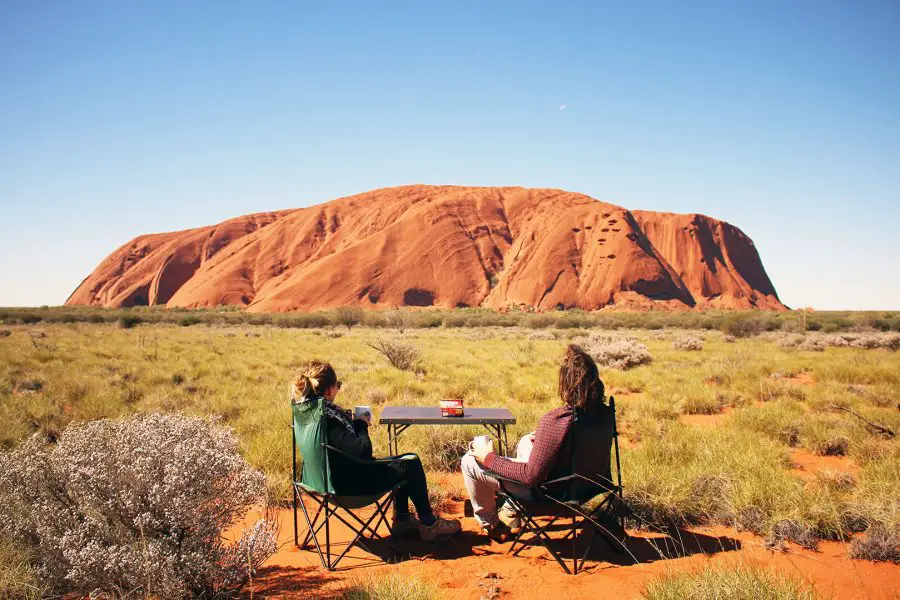
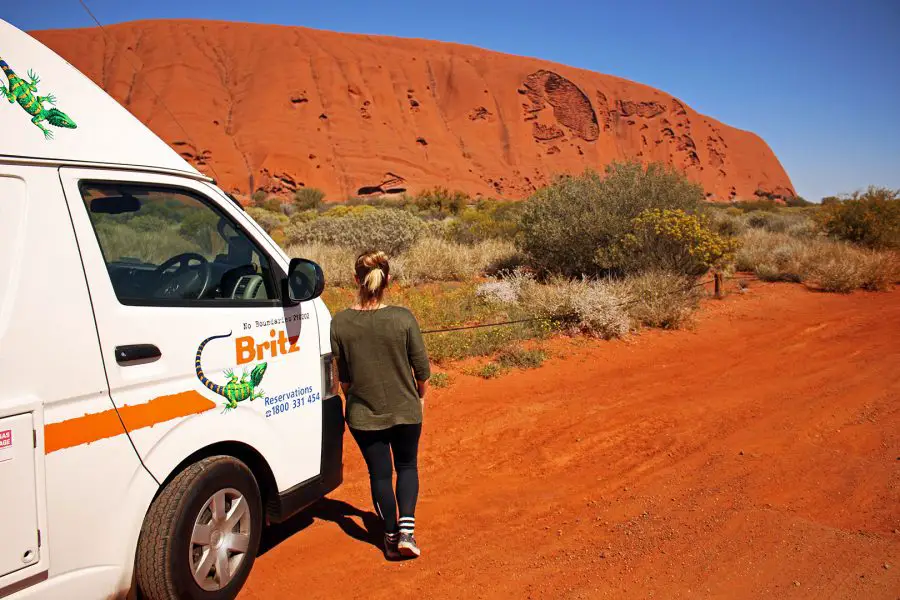
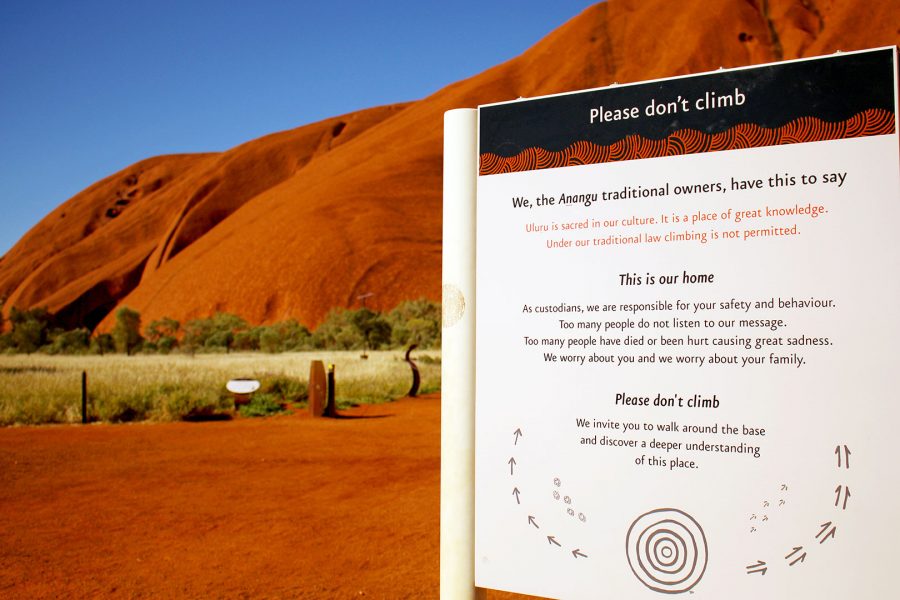
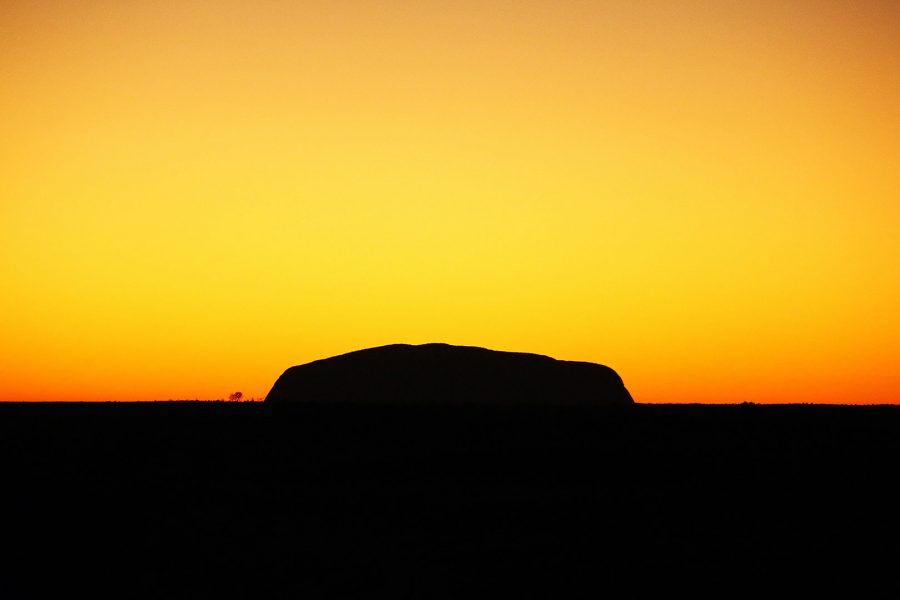
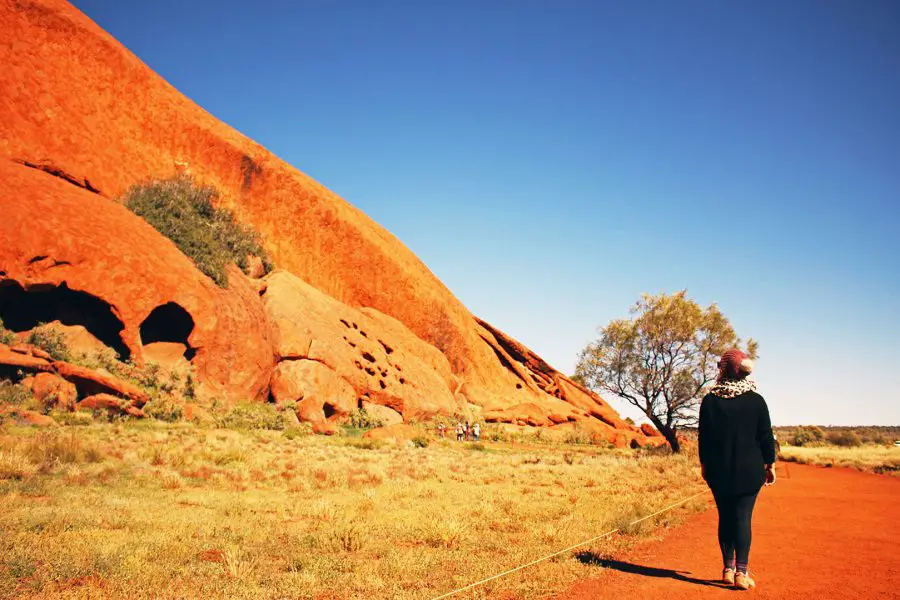
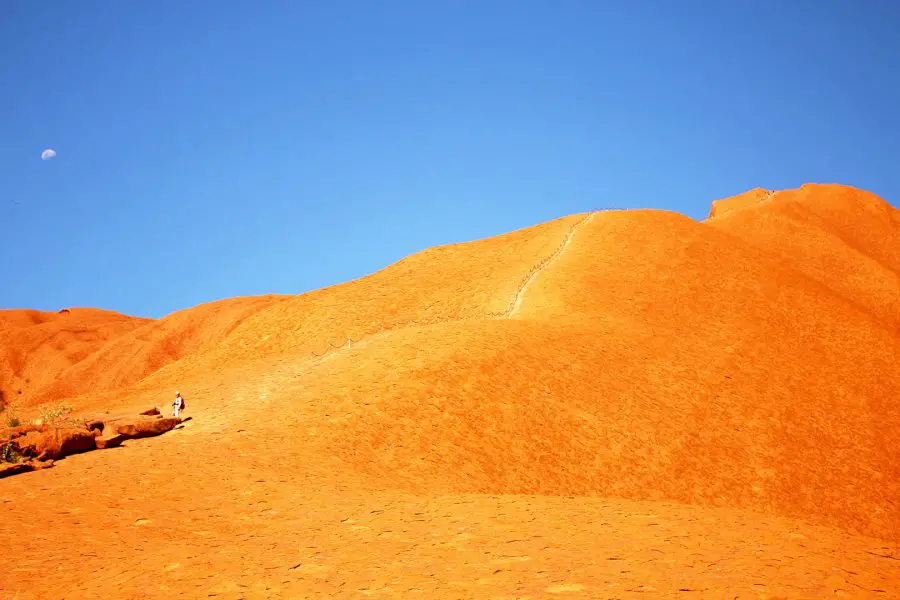
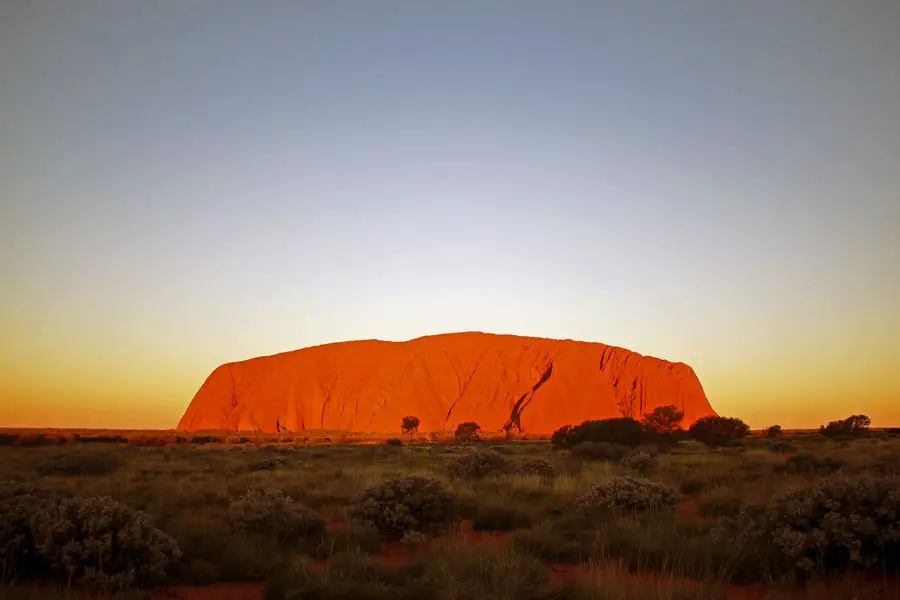
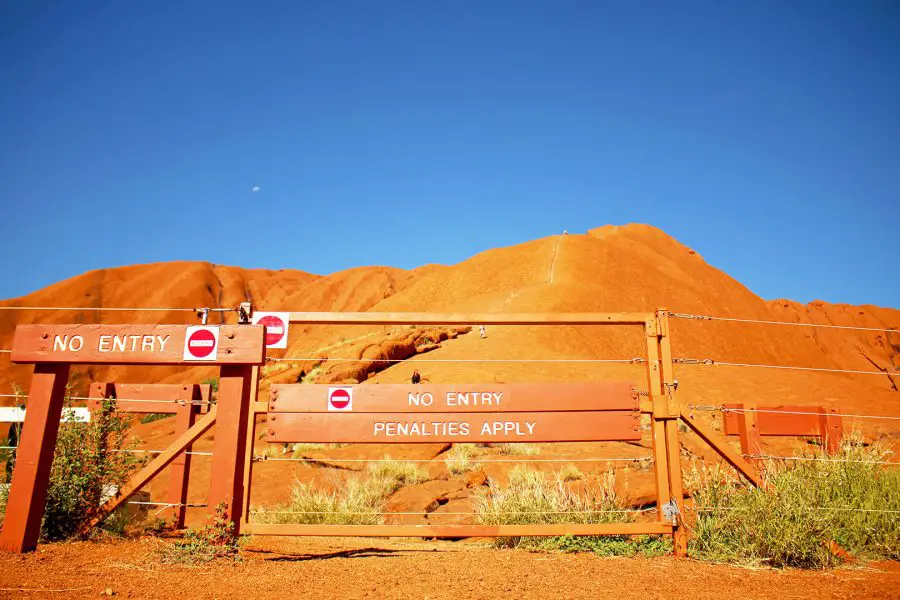



Hi Noelle! I’m a photo editor at an educational publisher. We are writing a lesson on Uluru and are interested in possibly licensing the photo of the no climbing sign. Is it one of yours? Thanks!
Hi Shira,
Thanks for getting in touch. Yes, all photos on this blog are ours unless otherwise stated.
I understand this was some time ago and we are late getting back to you here but if you are still interested in licensing the photo could you please contact us at [email protected]
Thanks!
I wish bloggers would stop spreading this misinformation. The first Anangu elder to take control of Uluru, Paddy Uluru, in 1973 said, “If tourists are stupid enough to climb the Rock, they’re welcome to it” and, “The physical act of climbing was of no cultural interest”. Tiger Tjalkalyirri, who played an important role in the handover of the Rock through the 1970s, was an Anangu traditional entertainer and also acted as a tour guide leading tourists up the rock. The notion that the rock is sacred and should not be climbed is a new and revisionist rewriting of their cultural history. The only original concern that the traditional guardians of Uluru had was for the safety of visitors. The newest council of tribal guardians have come up with this concept of sacred spirituality quite recently. Please feel free to research further into this. I suggest referencing the Northern Territory oral history unit.
Thanks for the historical information Joseph.
Either way, whatever the history, the current situation is that the Anangu people would prefer for people not to climb Uluru right now, so much so that it will be banned from October 2019.
Noelle, great not to climb Uluru, it’s all about showing respect! for the Anangu people.
We, tourists, are the visitors; they, the Aboriginal people, belong to these areas, their homeland.
Thanks so much Jos! We definitely agree – it’s all about respect!
I think we would climb Uluru, but we’d do it discreetly (perhaps at night) so as not to offend or upset any of the native aboriginals.
You can argue that climbing Uluru is disrespectful to the beliefs of the aboriginals. But other people’s beliefs are not always something we should respect, especially if those beliefs are based on myth, superstition or if they hamper our freedom to interact with a part of our home – the planet we were born on.
Requests like this only serve to further alienate the masses from the joy of fully participating in nature and connect with the wonders of our planet. To be cut off from such a magnificent masterpiece of geological forces acting over the eons is a great wound to the human psyche. Being excluded will further reinforce our disconnection from nature and consequently intensify the rapacious destruction of our planet as we attempt to alleviate the unbearable pain of being exiled from our home.
Moreover, the aboriginals do not have the right to dictate to their fellow homo sapiens where they can and can’t plant their feet, as they have no more authority than the rest of us. We all have equal say.
Why? Because the aboriginals are only a functional element of the desert ecosystem, a link in the food chain or in the circle of life. They do not “own” any part or feature of this landscape. They cannot play God by commanding others. Hence they have no grounds for excluding others from enjoying the beautiful and wondrous geographical features that nature (or God if you like) has crafted and sculpted over the eons.
It is a myth that the indigenous custodians of the landscape have the right or the authority to set boundaries and rules that the rest of us are obliged to follow. These people are very wise in many ways and they should be listened to on many matters. We have much to learn from the indigenous communities of our planet. In fact, they are the only ones that can guide us back to sustainability and a system that doesn’t upset ecological balance. We do not deny that.
But they are flawed too, like all of us. And we must know how to distinguish their flaws from their wisdom.
Hi Eoghan and Jili,
Thank you very much for your detailed and thoughtful response to this post.
While you make some well thought out points about the aboriginal people not having the right “to dictate to their fellow homo sapiens where they can and can’t plant their feet, as they have no more authority than the rest of us”, the fact is that they don’t demand this, they simply request that people do not climb Uluru.
In other natural places, like the top of Sri Pada or Adam’s Peak in Sri Lanka, people do not tread all over the sacred golden footprint of the Buddha, out of religious respect, and the actual tips of the peaks on Mount Everest (Sagarmatha) in Nepal and Mount Cook (Aoraki) in New Zealand are not stepped on out of respect for local Sherpa and Maori cultures and religions. It just so happens that the whole of Uluru is sacred to the local Anangu people and indeed all aboriginal people in Australia. They do not forbid anyone from climbing it. They also do not try to disconnect or alienate us from interacting with Uluru as you can walk all around the entire base of it and for us, it was one of the most educational places in Australia in terms of the aboriginal culture and the ancient ways and beliefs of the aboriginal community.
Some sections of the base of Uluru have extreme significance in their creation stories, so much so that they request people do not photograph these areas, but there is no one there watching or checking to make sure that people don’t photograph these sacred sections. The local Anangu people do not try to cut people off or exclude people from enjoying the wondrous beauty of Uluru, in fact, they have shared their sacred sight with people for decades.
Your comment that you would perhaps choose to climb discreetly at night so as not to offend not upset anyone seems strange as if you truly believed we all have the right to interact with all of nature, then why not just climb during the day? You wouldn’t even get a view of the surrounding area at night. Even though Uluru is only 863m tall, it would be extremely dangerous to climb it at night, and also against the park regulations as the national park closes to the public after sunset. It’s actually quite dangerous to climb it during the day as it’s sheer rock and as mentioned in our post above, the climb is often closed due to high winds or rain. Please do not attempt a nighttime ascent as it is extremely dangerous!
We do agree that as human beings we are all flawed in ways and at the end of the day it’s ultimately your decision whether you climb Uluru or not. With that said, one of the greatest things we can do as human beings, in our opinion, is to show respect and compassion for our fellow man, their culture, traditions and beliefs, especially when being welcomed as a visitor in a foreign culture.
What the Australian park ranger said about tourists who climb Uluru even though they are aware of the aboriginals’ objection.
Hi Suzanne,
I know right? 🙂 Gotta love the Aussie directness! 🙂
After reading your article and learning all about Uluru and the customs surrounding it I definitely would not climb it out of respect to the aboriginal people there. It would be too difficult anyways for me under normal circumstances but I would love to do the walk around the rock and enjoy the vibes that are there.
Hi Maida,
It’s so great that you would choose not to climb it after reading our article – that was our exact intention when writing it!
We hope that you do get to visit Uluru and walk around some time – the vibes really are amazing there! 🙂
Excellen article, thank you. I visited Australia’s “Red Center,” including Uluru of course, and chose NOT to climb for the very same points you bring up. As I see it, the bigger issue is that those who chose to climb still think of it as “Ayer’s Rock,” the name given it in 1873 by the surveyor William Gosse first sighted the landmark and named it in honor of the then Chief Secretary of South Australia, Sir Henry Ayers. It took 120 years for the Anangu people to reclaim the name and the sacred site that have been theirs for over 50,000 years, but apparently not everybody has gotten the memo!
Thanks so much Josette! 🙂
We totally agree with the points you make, it’s definitely seen as more of a landmark rather than a sacred place by the people who choose to climb it.
Greetings and Gidday from Downunder folks
Great article, came to it via LinkedIn notification.
I have linked to it from our “Mt Warning Climb” page at http://www.bigvolcano.com.au/stories/climb/mountain.htm
Hope you don’t mind. Please let me know if you’d prefer not, and I’ll remove it.
Cheers and Hooroo
Hi Jo-Ann,
Thanks so much – it’s great you came across our article! That’s no problem about the link, you can keep it in!
Have a great day! 🙂
I’m going in a few months and surely I won’t climb Uluru. Well done!
That’s great! 🙂 Enjoy Australia!
Congratulations for making that decision. I think it is an important mark of respect, and every visitor should read this piece. I will circulate it on my FB page for sure.
Thanks so much Sally! And thanks for sharing too! 🙂
That is such a beautiful place and this was a great read. You did well not to climb, as respecting the local people’s wishes is so important! Happy travels!!
Thanks so much Yasmine! Glad you enjoyed reading this post! 🙂